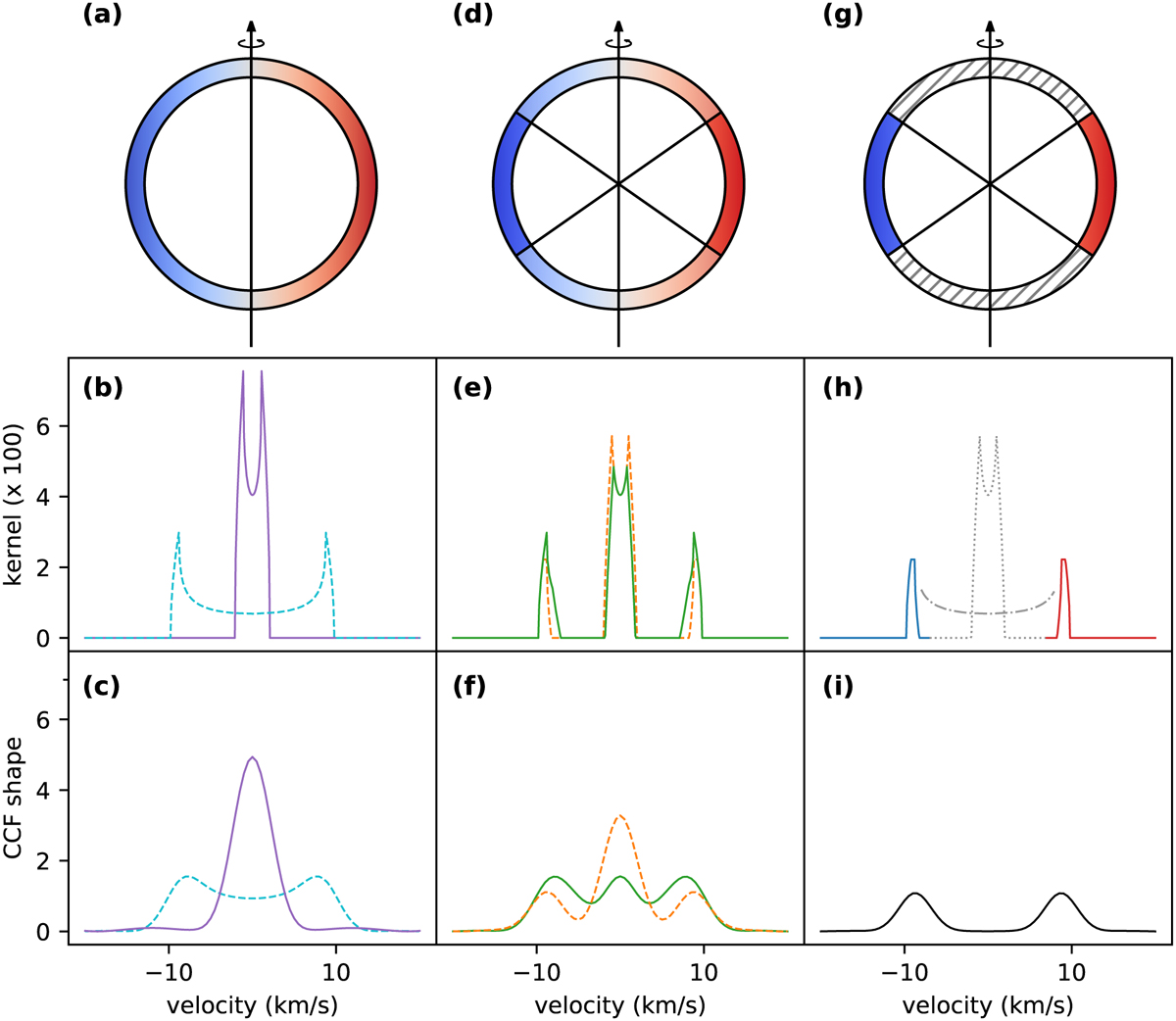Fig. 4

Download original image
Different scenarios of super-rotating atmospheric material. Panels a, b, and c show the scenario of a homogeneously rotating planet. The purple solid line shows the velocity kernel of the material at rotation consistent with tidally locked rotation (panel b) and the resulting shape of the cross-correlation function (panel c). The turquoise dashed line shows the effect of the planet rotating approximately six times faster. Panels d, e, and f show two cases of a super-rotating equatorial jet, with the poles rotating at tidally locked velocities. The difference between the two cases is the opening angle of the equatorial region (35° orange dashed, and 65° solid green). Panels g, h, and i explore the case of the velocity kernel of a super-rotating equatorial jet (blue and red solid lines in panel h) with the polar region represented by the velocity kernel of super-rotating velocity (grey dash-dotted line) or tidally locked velocity (grey dotted line), but not contributing to the transmission spectrum due to muted atmospheric features, leading in both cases to only two peaks in the CCF (panel i).
Current usage metrics show cumulative count of Article Views (full-text article views including HTML views, PDF and ePub downloads, according to the available data) and Abstracts Views on Vision4Press platform.
Data correspond to usage on the plateform after 2015. The current usage metrics is available 48-96 hours after online publication and is updated daily on week days.
Initial download of the metrics may take a while.


